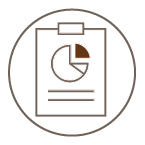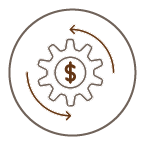How to Track Your Money
Cash Flow Management
Cash flow management—how and when your income arrives, and how and when you pay bills or spend your money on other items—helps keep your finances in good working order. If your bank offers online banking, you can view your actual cash flow whenever you log into your account.
Timing matters. You want to make sure you have enough money in your bank account at any given time to pay bills that are coming due. For regular income and expenses, cash flow planning is straightforward and can be set up on a schedule (including automatic payments).
Managing non-regular income and expenses requires more coordination. For example, if you are counting a financial aid refund as income, and it covers part of your living expenses, you may need to set aside enough money to last until your next financial aid check arrives.
Here are key tips:
- Establish a base amount for your bank account (an amount that you only go below in emergencies)
This helps prevent overdraft or other bank fees. - Use your spending plan to identify when you get paid and when expenses come due each month
This helps you understand what your daily balance will be in your bank account. - Map when your expenses are due (and how much) to when you get paid (and how much)
This helps you ensure you pay bills on time. - Include income and expenses that don’t happen monthly
This helps you prepare for non-regular expenses.



